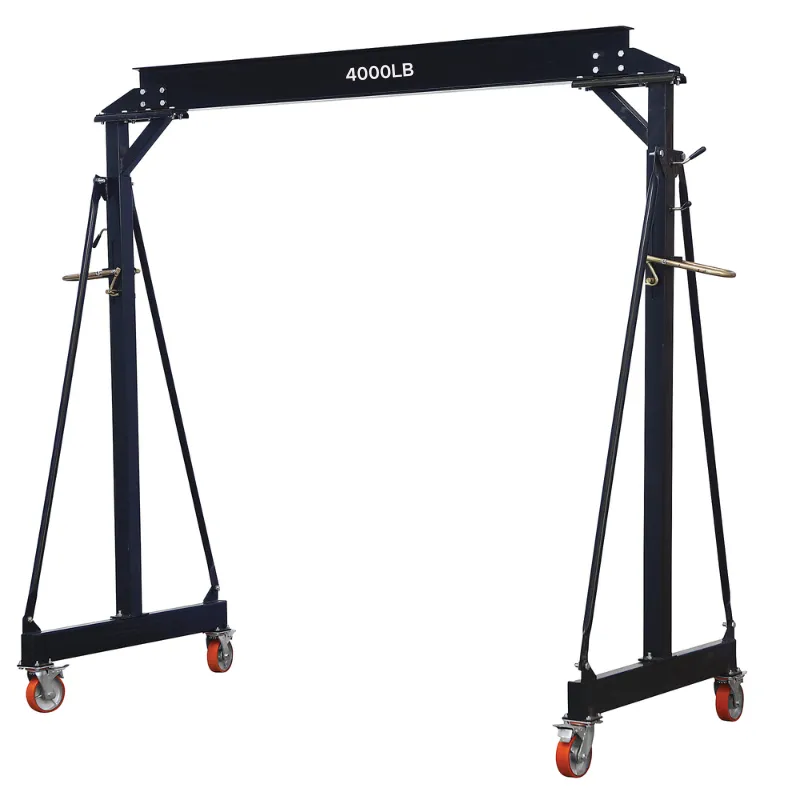Efficient Strategies for Machinery Relocation and Setup in Industrial Environments
The Importance of Machinery Relocation in Modern Industries
Machinery relocation is a critical process in various industries, encompassing the moving, dismantling, and installation of heavy equipment and mechanical components. As businesses expand, upgrade, or shift their operational strategies, the need for efficient machinery relocation becomes increasingly prominent. This article will discuss the importance, challenges, and best practices involved in machinery relocation, emphasizing its role in enhancing operational efficiency and minimizing downtime.
Importance of Machinery Relocation
1. Business Expansion and Growth As companies grow, they often need to relocate machinery to larger facilities that can accommodate increased production demands. Relocation allows organizations to scale operations, meet rising market demands, and enhance their competitive edge.
2. Upgrading Technology Technological advancements necessitate the replacement of outdated equipment with modern machinery that improves productivity and efficiency. Machinery relocation ensures that new equipment is strategically positioned for optimum performance, enabling businesses to leverage the latest technological innovations.
3. Cost Reduction Relocation can lead to significant cost savings. By moving machinery to locations with lower operational costs, such as reduced labor costs or cheaper real estate, companies can improve their overall profitability. Additionally, efficient relocation reduces the risk of damage to expensive machinery, which can lead to costly repairs or replacements.
4. Operational Efficiency Proper relocation planning can minimize disruption to operations. A well-executed machinery relocation strategy ensures that all equipment is installed correctly and functioning optimally, allowing for a seamless transition and uninterrupted production processes.
Challenges in Machinery Relocation
While essential, machinery relocation presents several challenges that organizations must navigate
1. Logistical Complexity Moving large-scale machinery often involves intricate logistics, including transportation, storage, and installation. Companies must coordinate various aspects of the move to avoid delays and ensure the equipment is reassembled correctly.
machinery relocation

2. Risk of Damage Heavy machinery is susceptible to damage during transit. Ensuring that equipment is properly packed, transported, and installed is vital to prevent costly repairs. Organizations often employ specialized movers with experience in handling heavy machinery to mitigate these risks.
3. Downtime The relocation process can lead to significant downtime for businesses. Planning the move during off-peak hours can help mitigate interruptions, but companies must still account for potential setbacks in production.
4. Regulatory Compliance Different regions may have specific regulations regarding the transportation and installation of machinery. Companies must ensure compliance with local laws to avoid legal complications and potential fines.
Best Practices for Successful Machinery Relocation
To overcome the challenges of machinery relocation, organizations can adopt several best practices
1. Thorough Planning Creating a comprehensive relocation plan is fundamental. This includes timelines, a checklist of equipment to be moved, and a strategy for disassembly and reassembly.
2. Engaging Professionals Hiring experienced machinery relocation specialists can alleviate much of the stress involved. These professionals possess the skills and knowledge necessary to handle complex machinery moves safely and efficiently.
3. Communication Maintaining clear communication among all stakeholders—including management, employees, and relocation teams—is crucial. This ensures everyone is informed about the process, timeline, and any changes that may occur.
4. Investment in Technology Utilizing advanced technologies such as 3D modeling and simulation can help organizations visualize the new layouts and address any potential issues before moving.
In conclusion, machinery relocation is an essential component of modern industrial operations. By recognizing its importance, understanding the challenges, and implementing best practices, businesses can ensure a successful and efficient relocation process. Proper planning and execution not only enhance operational efficiency but also position organizations for future growth and innovation.
-
Unlock Seamless Relocation with Our Heavy Equipment Moving ExpertiseNewsJun.06,2025
-
Unleash Unrivaled Flexibility with Our Adjustable Gantry CraneNewsJun.06,2025
-
Unleash Heavy-Duty Efficiency with Our Industrial Gantry Crane SolutionsNewsJun.06,2025
-
Revolutionize Steel Handling with Our Magnetic Lifter RangeNewsJun.06,2025
-
Master Equipment Mobility with Premium Machinery Mover SolutionsNewsJun.06,2025
-
Elevate Your Material Handling with Magnetic Lifter TechnologyNewsJun.06,2025
-
YS Permanent Lifting Magnets: The Smarter Way to Handle SteelNewsMay.22,2025
